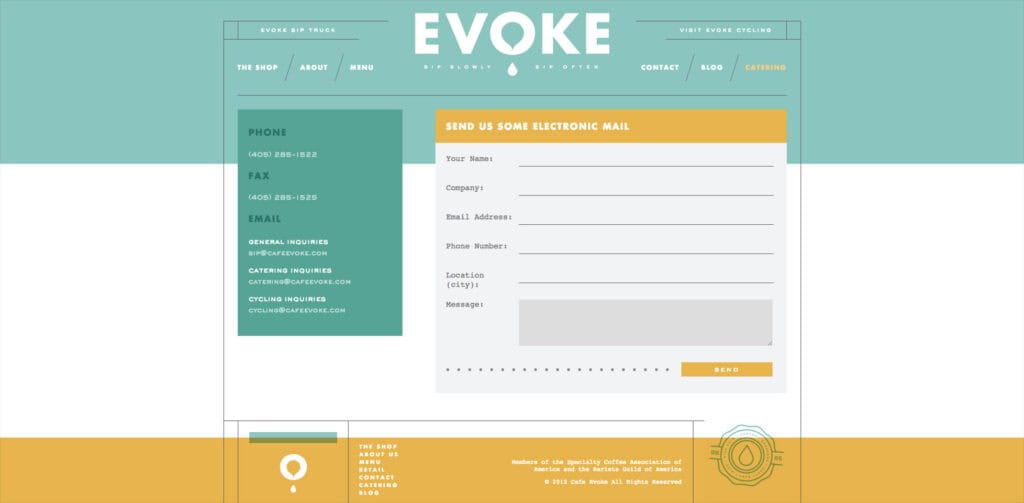The contact page of a website can make or break conversions. If your visitor has had a good experience up until the point of visiting the contact page (would they still be on your site if they hadn’t?) and the contact page fails to generate that final “click”, a potential customer is gone, quite possibly forever.
It’s imperative that you encourage users to take that final step from casually interested, to fully engaged with your, or your client’s, company. An effective contact page will not only assist the visitor in bridging the gap, but may well be the final proof of quality they need to persuade them to do so.
Creating an effective contact page
Creating an effective contact page is a key process for most sites, here are 9 elements to focus on, to ensure that the “send” button doesn’t sit idle:
1) Limit the number of required fields
The more information you ask for from a user, the less likely they are to complete a contact form. Only ever ask for the information you absolutely need.
2) Place a bounding box around forms
By placing a bounding box around forms you make them easy to identify at a glance, and help users gauge what parts of the page are interactive.
3) Embed Google maps
For bricks-and-mortar businesses, helping users find the location is obviously beneficial. Even for online businesses, displaying a physical location adds credibility.
4) Add social proof
Speaking of credibility, add elements that will give customers confidence, such as testimonials, BBB emblems, the number of years you’ve been in business, and so on.
5) Add branding
It might sound foolish, but most potential customers are browsing numerous sites, often in multiple tabs. It pays to remind them exactly who they’re about to contact.
6) Guide user input
Use UI elements like selects, and option fields, to guide user input. The easier it is to give you the information you want, the more likely it is you’ll get it.
7) Keep it simple
Simple always wins, especially on mobile. Remember that on mobile, your form may need to be larger in order to be usable.
8) Include your phone number
Many businesses don’t want to include a phone number because they think they’ll be fielding calls all day. The reality is a phone number is like Google maps, it gives you credibility and makes the customer feel safe handing over their personal details.
9) Add a privacy statement
Add the guarantee that your company will keep users’ details confidential. This builds trust.
Grain and Mortar
- The Human Test is easy, but keeps out spam. When spam tests are difficult to decipher, users get frustrated and click off.
- Putting the FAQs on the page saves users time and results in higher quality inquiries.
- Only three required fields — it can’t get much simpler.
- The overall simplicity of design, with over-sized fields for mobile UX, is generally pleasant to view and work with.
Evoke
- This design is non-traditional, made to look like a postcard. Because the design is also simple and has a bit of fun woven into it, user interest is heightened.
- The bounding box around the inquiry form makes it stand out from the rest of the page.
- The color scheme, logo and credibility elements in the footer (associations) combine for a strong presentation of branding. This contact page definitely has its own character, gourmet yet down to earth. The form should resonate with people looking for these qualities.
Shiner
- Strong borders around the form fields make it impossible for users to get confused.
- Again, we see a small number of over-sized form fields.
- The design has a bit of old world, traditional flavor — no doubt exactly how their beer tastes. Brand consistency makes visitors thirsty!
- The large Google Maps embed is a nice convenience for users, lessening the need to enlarge or reduce it.
Knowing the business + knowing the customer = great contact page
Notice that all of these examples are effective, but use different design techniques. Crafting an effective design page requires an understanding of the brand, what potential customers want to know, and the key website user influencers.
Universally, website users want simplicity, so it’s not surprising that all of these featured contact pages ooze “easy”. However, insight, imagination and a unique approach are needed to create, strengthen or sustain brand interest when users hit the contact page.
